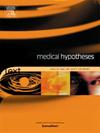Activation of resident immune cells induces enteric neuronal death
IF 0.8
4区 医学
Q3 MEDICINE, RESEARCH & EXPERIMENTAL
引用次数: 0
Abstract
Resident immune cells are involved in the pathogenesis of inflammatory bowel diseases (IBDs). Studies have already demonstrated that these cells, mainly mast cells and macrophages, are close to and in communication with neurons of the enteric nervous system (ENS). Enteric neurons organized in ganglions participate in processes such as control of motility, secretory functions, absorption and blood flow. Morphological and functional changes in these neurons can cause intestinal damage, such as changes in intestinal motility and diarrhea, common features of IBD. Uncontrolled or unregulated activation of mast cells can also interfere with intestinal homeostasis and generate tissue dysfunction and promote inflammation in various gastrointestinal diseases. These cells can also act by releasing mediators that activate enteric glial cells (EGC), leading to reactive gliosis. Despite being recognized as essential regulators of neuronal function in the ENS, when activated by injuries and inflammatory processes, these cells can proliferate and undergo broad activation that, in association with other cells of the external muscular layer of the intestine (neutrophils, monocytes, resident macrophages and smooth muscles) produces and releases pro-inflammatory mediators. This pro-inflammatory action also involves the participation of the beta fraction of the calcium-binding protein S100 (S100β), which despite being found in other cells, in the intestine its expression is limited to EGC. The increase in the expression of this protein may be responsible for the death of neurons, through the activation of receptors for advanced glycation end products (RAGE) and consequent activation of the nuclear transcription factor-κB (NFκB). RAGE-type receptors are expressed in several cells, including their presence in macrophages. It is known that interactions between macrophages and the ENS interfere with intestinal motility, serve as a protective mechanism during injuries and infections, but can also contribute to tissue damage and other gastrointestinal disorders. Therefore, our hypothesis suggests that mast cells and macrophages, resident immune cells, are involved in enteric neuronal death, through the activation of EGCs and the release of pro-inflammatory factors.
激活驻留免疫细胞诱导肠神经元死亡
驻留免疫细胞参与炎症性肠病(IBDs)的发病机制。研究已经证明,这些细胞,主要是肥大细胞和巨噬细胞,与肠神经系统(ENS)的神经元接近并相互通信。在神经节中组织的肠神经元参与控制运动、分泌功能、吸收和血流等过程。这些神经元的形态和功能改变可引起肠道损伤,如肠蠕动改变和腹泻,这是IBD的共同特征。肥大细胞不受控制或不受调节的激活也会干扰肠道内稳态,产生组织功能障碍,促进各种胃肠道疾病的炎症。这些细胞也可以通过释放激活肠胶质细胞(EGC)的介质,导致反应性胶质细胞形成。尽管在ENS中被认为是神经元功能的重要调节因子,但当受到损伤和炎症过程的激活时,这些细胞可以增殖并经历广泛的激活,与肠外肌层的其他细胞(中性粒细胞、单核细胞、常驻巨噬细胞和平滑肌)一起产生和释放促炎介质。这种促炎作用还涉及钙结合蛋白S100 (S100β)的β部分的参与,尽管在其他细胞中发现,但在肠中其表达仅限于EGC。这种蛋白表达的增加可能通过激活晚期糖基化终产物受体(RAGE)和随后的核转录因子-κB (NFκB)的激活而导致神经元的死亡。rage型受体在多种细胞中表达,包括巨噬细胞。众所周知,巨噬细胞与ENS之间的相互作用会干扰肠道运动,在损伤和感染期间起到保护机制的作用,但也可能导致组织损伤和其他胃肠道疾病。因此,我们的假设表明,肥大细胞和巨噬细胞,即常驻免疫细胞,通过激活EGCs和释放促炎因子参与肠神经元死亡。
本文章由计算机程序翻译,如有差异,请以英文原文为准。
求助全文
约1分钟内获得全文
求助全文
来源期刊

Medical hypotheses
医学-医学:研究与实验
CiteScore
10.60
自引率
2.10%
发文量
167
审稿时长
60 days
期刊介绍:
Medical Hypotheses is a forum for ideas in medicine and related biomedical sciences. It will publish interesting and important theoretical papers that foster the diversity and debate upon which the scientific process thrives. The Aims and Scope of Medical Hypotheses are no different now from what was proposed by the founder of the journal, the late Dr David Horrobin. In his introduction to the first issue of the Journal, he asks ''what sorts of papers will be published in Medical Hypotheses? and goes on to answer ''Medical Hypotheses will publish papers which describe theories, ideas which have a great deal of observational support and some hypotheses where experimental support is yet fragmentary''. (Horrobin DF, 1975 Ideas in Biomedical Science: Reasons for the foundation of Medical Hypotheses. Medical Hypotheses Volume 1, Issue 1, January-February 1975, Pages 1-2.). Medical Hypotheses was therefore launched, and still exists today, to give novel, radical new ideas and speculations in medicine open-minded consideration, opening the field to radical hypotheses which would be rejected by most conventional journals. Papers in Medical Hypotheses take a standard scientific form in terms of style, structure and referencing. The journal therefore constitutes a bridge between cutting-edge theory and the mainstream of medical and scientific communication, which ideas must eventually enter if they are to be critiqued and tested against observations.
 求助内容:
求助内容: 应助结果提醒方式:
应助结果提醒方式:


